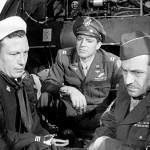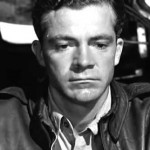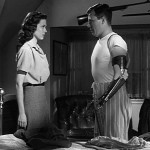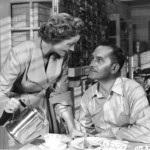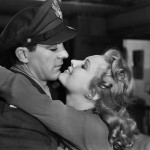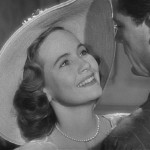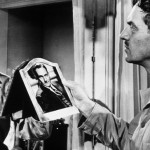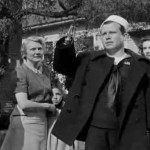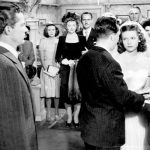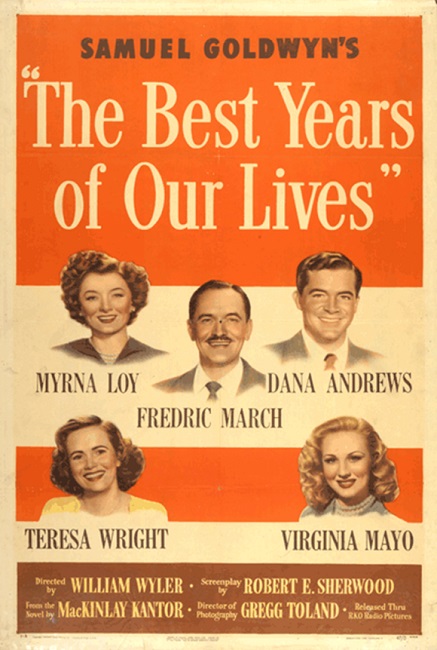
The Best Years of Our Lives – 1946
This was a very good movie for several reasons. It had some wonderful acting, believable characters and story lines, serious dramatic content, and even an overall feeling of social consciousness. It dealt with the difficult subject of WW II veterans coming home after the war and their attempts to return to their normal lives. But the devastating war left no man unmarked, or undamaged. The men who fought for our freedom were forever changed, forever scarred – some physically, some emotionally.
The film was nominated for eight Awards, winning seven of them. Aside from Best Picture, it took home Oscars for Best Director (William Wyler), Best Actor (Fredric March), Best Screenplay, Best Supporting Actor (Harold Russell), Best Film Editing, and Best Music.
When it comes to this Academy Award Best Picture winner, I was quite pleasantly surprised. I went into this movie thinking that is was going to be depressing and sad. But thank goodness, I was wrong. Sure, there were depressing moments, but the story was incredibly well written, giving it a feeling of hope despite terrible hardships. I have to give a special notice of congratulations to MacKinlay Kantor for a job well done in writing the novella the movie was based on, and Robert Sherwood for writing the brilliant screenplay. Sherwood won the Academy Award for best screenplay. The plot was so incredibly believable. What really cemented the realism for me was the ending. It was not your typical Hollywood ending. Not all the problems were resolved. Not every character ended up happy.
The plot revolves around three service men in different branches of the military. Actor Fredric March played Sergeant First Class Al Stephenson. His problem: estrangement from a family he has not seen in several years and consequently, severe alcoholism. Dana Andrews plays Air Force Captain Fred Derry. His problem: an inability to find satisfying work in a post-war low job market, a wife who is practically a stranger whom he married on a whim only a few weeks before shipping out to war, and post-traumatic stress syndrome. Finally, non-actor Harold Russell played Petty Officer 2nd Class Homer Parrish. His problem: The loss of both hands during the war, and an inability to accept his own disability, rejecting others because he is afraid of being rejected. He thought that others saw him as a freak, but I think that he couldn’t get past seeing himself as one.
As you can see, very serious and very realistic problems. But the entire cast was up to the task. The acting seemed natural and easy, even for Russell, whose disability was not a special effect. He really did have prehensile hooks in place of his hands. He did a fantastic job, even during the heavily dramatic moments of the demanding role. There seemed to be more there than just simple acting. He acted the part well because he had lived it.
A very handsome Dana Andrews did a great job as well. He looked sharp in his Air Force Uniform, like a nice guy you’d want to know. But though the disability he portrayed was not physical, it was certainly just as devastating. His character would frequently relive the horrors of being a bomber in the war, screaming in his sleep and waking drenched in sweat. As it turned out, he was the romantic lead of the film. His love interest was an actress whom I have mentioned in an earlier review.
Teresa Wright played the part of Peggy Stephenson, Sargent Stephenson’s adult daughter. Just as in Mrs. Miniver, Wright was a delight to watch. She is beautiful and vivacious, and she always seems to have a sparkle in her eyes. She played a much more adult character here, and once again, she stood out to me as an exceptional actress.
Like I mentioned earlier, one of the things that made the plot so much more real to me was the fact that not all the problems were resolved by the end of the film. Sargent Stephenson was still drinking too much, Captain Derry was still reliving his experiences as a bombardier, and Petty Officer Parrish still had his physical disability to cope with. But the point was made that despite the scars that all soldiers came home with, there was the hope of happiness and a light at the end of every tunnel. Parrish got to marry his girl, Derry got away from his bad marriage and got together with Peggy, and Stephenson’s family was supporting him through his fight with his alcohol abuse.
This was a very emotional movie. So far, in all the Academy Award winning films I have watched up to this point, I might even go so far as to say that this was the most dramatic Best Picture winner yet because it is one of the most realistic stories. I imagine it might have hit close to home with a lot of audiences in 1946. The subject matter was current for its time but still relevant for audiences of today. The scars of war that all soldiers bear affect more than just the soldiers. They affect the families and friends that they return to after the wars are over.
Interesting note: Producer Samuel Goldwyn reportedly said of this film, “I don’t care if it doesn’t make a nickel… I just want every man, woman and child in America to see it.” I can see what he meant. The stories are just that powerful.
